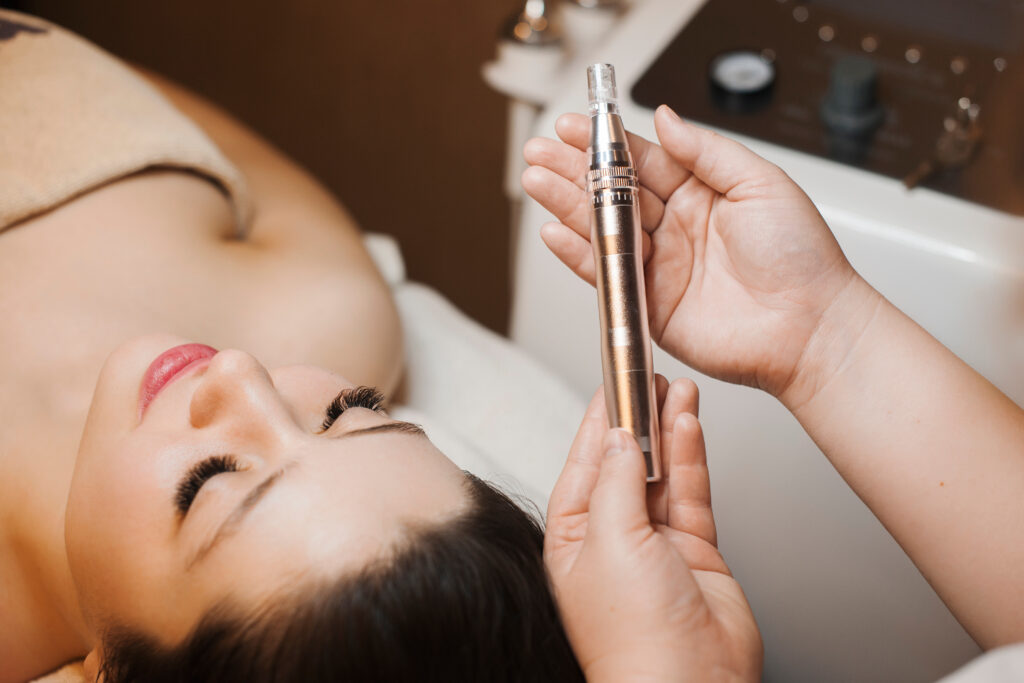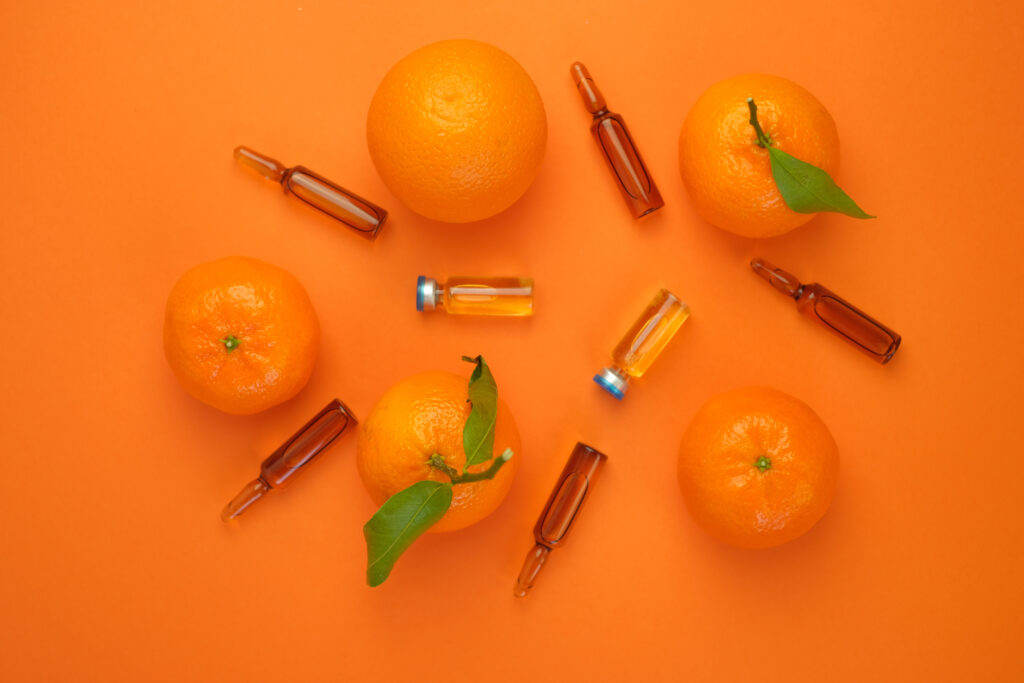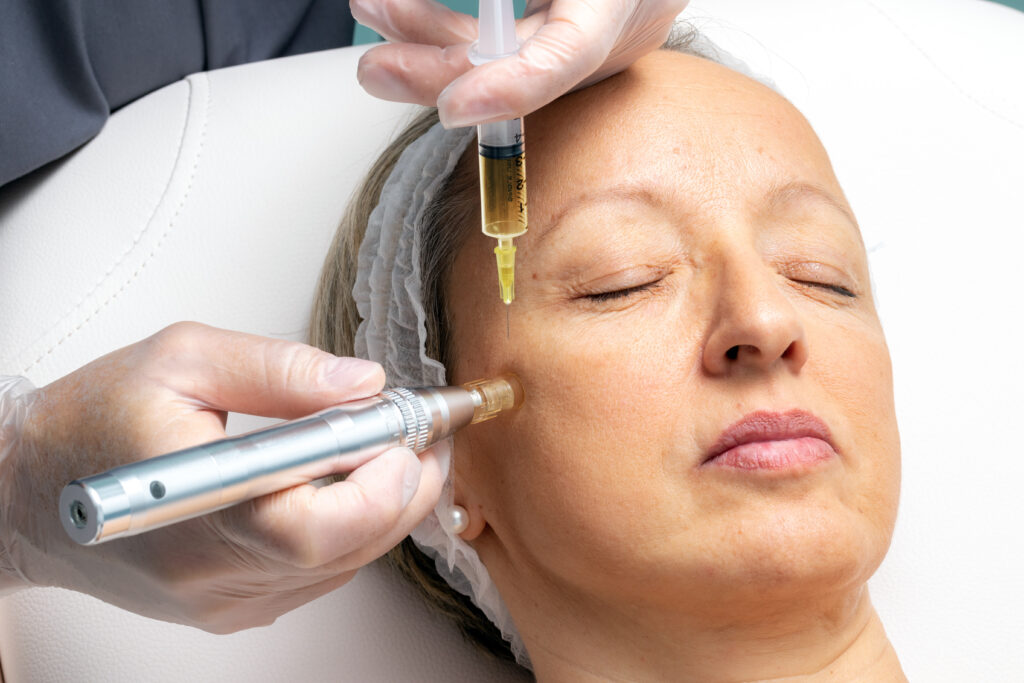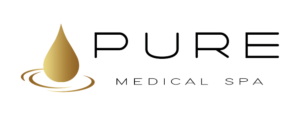
Microneedling
Stand alone, with Vitamin C, and with PRP
If you know, you know.
Microneedling is an extremely versatile, effective treatment that is performed using a device consisting of medical grade needles that vibrate up and down into the skin. This process creates a controlled damage which in turn results in the body’s natural response to the recovery process consisting of new cell growth and collagen production. Microneedling is most common on the face, neck and decolletage, but can be treated on various parts of the body such as arms, legs, abdomen and back. Areas of concern that microneedling will address consist of hyperpigmentation and sunspots, fine lines, deep wrinkles, scarring, pore size, textured skin and so much more. Microneedling is done in a series of three treatments typically spaced three to four weeks apart. You can also take your treatment to the next level by adding a chemical peel and/or LED light therapy directly following the microneedling procedure.


With Vitamin C
Microneedling with Vitamin C: During this microneedling procedure a medical grade vitamin C serum is used to infuse into the open microchannels on the skin. Vitamin C is a potent antioxidant that combats environmental pollutants, aids in the correction of sun damage and melasma and assists in the production of collagen which helps to create a more youthful complexion.
With PRP
Microneedling with PRP: Platelet Rich Plasma (PRP) consists of two parts: Plasma (the liquid portion of the blood), and platelets. Platelets contain growth factors that aid in tissue regeneration and helps to stimulate cell reproduction which plays a vital role in healing and recovery. The process of obtaining PRP is done by a licensed medical provider performing a simple blood draw on the client. The blood sample is then placed in a centrifuge where it processes and creates Platelet Rich Plasma. The PRP is then infused into the skin during the entire microneedling treatment. PRP enhances collagen and elastin production in the deeper levels of the skin and amplifies the treatment by utilizing the body’s own growth factors that will result in a quicker recovery process and superior results.

FAQ
What is microneedling, and how does it work?
Microneedling is a minimally invasive cosmetic procedure that involves using a device with tiny needles to create controlled micro-injuries in the skin. These micro-injuries stimulate the body’s natural healing process, leading to increased collagen and elastin production, resulting in smoother, firmer, and more even-textured skin.
What concerns can microneedling address?
Microneedling is commonly used to address various skin concerns, including fine lines, wrinkles, acne scars, enlarged pores, uneven skin tone, and texture irregularities. It can also improve the overall appearance and quality of the skin.
Is microneedling safe? Are there any side effects?
Microneedling is generally safe when performed by a trained and experienced professional. Side effects are typically mild and temporary, such as redness, mild swelling, and sensitivity. Serious complications are rare but can occur if proper sterilization and aftercare instructions are not followed.
How long does it take to see results from microneedling?
Results from microneedling can vary depending on the individual’s skin condition and the treatment plan. Some patients notice improvements in skin texture and tone within a few days to a week after the initial treatment. However, collagen remodeling takes time, and optimal results usually become visible after a series of treatments spaced a few weeks apart.
How many microneedling sessions are typically needed?
The number of microneedling sessions required depends on the individual’s skin concerns and treatment goals. For mild concerns, a single treatment may be sufficient, while more significant issues may require multiple sessions, usually spaced 4 to 6 weeks apart. Maintenance sessions may also be recommended to sustain results over time.
Is microneedling painful?
The level of discomfort experienced during microneedling can vary from person to person. Before the procedure, a topical numbing cream is often applied to minimize discomfort. The sensation is typically described as a mild prickling or scratching feeling as the needles penetrate the skin.
Can microneedling be combined with other treatments?
Yes, microneedling can be combined with other treatments to enhance results. For example, it is often performed in conjunction with the application of serums or platelet-rich plasma (PRP) to further nourish and promote skin rejuvenation. Additionally, it can be combined with chemical peels for more comprehensive skin rejuvenation.
Is microneedling suitable for all skin types?
Microneedling is generally safe for most skin types, including various skin tones and ethnicities. However, individuals with certain skin conditions, such as active acne or infections, may need to postpone treatment until the condition is resolved. It’s essential to have a consultation with a qualified provider to determine if microneedling is the right option for your specific skin concerns and medical history.
What Our Patients Say About Us













Contact Us Today and Begin the Journey to a Pure You

